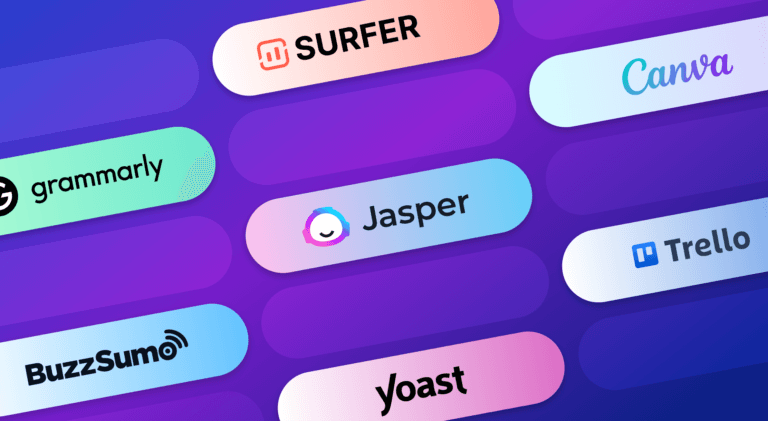5 Best Templates for Creating your LinkedIn Content Calendar

Does your line of business rely heavily on social media marketing (SMM)? Are you always overwhelmed with ideas and do not know where to start? Relax! You are not alone.
With the increasing importance of social media marketing, getting visibility and being heard above the din of content might seem like an uphill task. However, with a proper plan, you can achieve engagement and connect with your readers.
Over time, LinkedIn has emerged as the best social media platform to engage relevant readers and gain visibility for your business. It says that as many as 94% of B2B marketers use LinkedIn as a content distribution channel. The professional networking platform also makes up over 50% of all social traffic to B2B websites and blogs.
In this process of social communication on LinkedIn, the first thing is to chalk out the broad theme and message you want to communicate to your readers. For instance, if you are a new e-commerce site for men’s fashion, you might want to revolve your topics around men’s clothing, current trends in men’s fashion, current economic scenarios for sustainable fabric, etc. Or, if you are a freelance writer specializing in technical writing, you can catch attention with digital transformation topics and IT solutions for various services like healthcare, insurance, manufacturing, etc.
In SMM vocabulary, anything that you post or share is what defines you as a brand. Think of the theme as something that would add to your brand value and identity. Do not be all over the place with your topics, since you or your brand might come across as inconsistent or unorganized about your own business.
How a LinkedIn Content Calendar Helps
A content calendar helps you plan and prioritize your content as well as allocate your resources accordingly. Maintaining a calendar also ensures that you have time to proofread your content before finally posting it on LinkedIn: no frenzied typing till the last minute with no time for fact-checking. Apart from this, by creating your LinkedIn calendar, you will be able to:

- Focus on what your audience wants.
- Engage and connect with your audience.
- Plan for the future rather than just the immediate present.
- Streamline your resources for brainstorming and content integration with other social media platforms.
A Few Key Elements in a LinkedIn Content Calendar
Some of the fundamental elements to include in your calendar for ease of access and understanding are:
1. Owner of the content
This is for those who own small businesses. If you are a freelancer or the sole owner of your content, you can skip this. It is fundamental to assign a writer or owner of the content to better plan, churn quality content, and stick to deadlines. Assign owners so that that particular person is responsible for the content and there is no confusion at the last minute on who should post or share the content.
2. Content title
Whether it is a blog, video, or photo, there should be a tentative title for the project. This gives an idea about where to start giving direction to the project. You can always change the title once the content takes shape, but start with a working title for a general idea.
3. Monthly/weekly theme
This could be a bi-weekly theme, but never stretch a theme or conversation point for more than a month. For instance, June is Pride Month in support of the LGBTQIA+ community. A lot of websites, communities, web pages, and people post content surrounding this theme in June. To stay relevant, you can plan a theme for a week or a month and plan your topics accordingly.
It also helps clarify what topics to expect for the next few days for both the audience and the writer. However, this is not a hard and fast rule, especially if you already have a broad theme for your brand and share content accordingly. For special weeks or months like Pride Month, holiday season, or Women’s History Month, you can chalk out a conversation theme accordingly, with topics surrounding it.
4. Target audience
Your target audience can be bifurcated into primary, secondary, and tertiary. For instance, for a home decor blog, the primary audience could be married women aged 25 to 50. The secondary audience could be interior designers, and the tertiary audience could be men looking for ideas for their spouses or partners. Deciding on your target audience helps you understand what to expect from your content regarding tonality, messaging, and images.
5. Call to Action (CTA)
What is the chief purpose of your content? How do you want your audience to respond? Do you want them to visit your website, buy your products, or simply get engaged? Deciding on a CTA makes it easier to set a goal for your content and your business.
6. Keywords and hashtags
These are vital for social media content writing and search engine optimization (SEO). Incorporating relevant keywords and hashtags in your calendar would help efficiently execute the content creation process and for a smoother plug-in after creation.
7. Schedule content
Most social media calendars have automated schedules for your campaigns, which means you can enter a specific date and time for the post to go live, and the calendar will automatically post it for you. However, initially, you can try scheduling and posting manually to avoid any incomplete or hurried posting.
Now that you know what you want in your social media marketing strategy, it is time to whip up your virtual calendar. It is not as dull or cumbersome as it might sound. Think of it as organizing your closet. It helps you stay organized and free up your mind. You do not need to get stressed every time you have to post content on your page.

Every content calendar is different and serves different purposes. Choose the one that you would like to work with. Ensure this calendar is good enough to organize your content repository for social media marketing. It could be monthly, weekly, daily, or fortnightly; the point is to make a schedule and stick to it.
Numerous LinkedIn or social media marketing calendars on the internet, such as Asana, Hootsuite, CoSchedule, etc., can help you stay organized and on top of your game. Some of them come with a paid membership, while some offer free templates. You can start with the free ones to get an idea about the function and then switch to a paid membership with added benefits like scheduled postings, more color-coded themes, relevant statistics, etc. Once you start organizing your content calendar, you will see an increase in the quality of content with high engagement numbers and increased brand value for your business.

Social Media Calendar Examples
Curious about what these calendars look like at the end of the day? Here are some examples of real-life social media content calendars:
1. Digital Opportunity Trust’s (DOT) internal social media content calendar
DOT’s social media content calendar is simple and straightforward. It helps you see all their channels, such as their proprietary platform Innojo, at a glance.
Meanwhile, DOT’s content library page serves as a self-explanatory catch-all for ideas, evergreen material, and future articles that have yet to be scheduled.

2. Hootsuite’s Internal Social Media Calendar

Hootsuite’s social media team uses Google Sheets as well as the Hootsuite Content Planner. This Sheets calendar caters to a variety of channels, each of which has many posts every day. Users can see multiple platforms by scrolling horizontally, and future or previous dates by scrolling vertically. When the postings become live, the text is removed.
Sheets is useful for sketching out material across multiple platforms because of the massive volume of information Hootsuite distributes. The team may add placeholder articles (i.e., posts without finished content, links, or assets) to gain a feel for the site and guarantee a balanced mix of subjects. On the other hand, Hootsuite’s fully completed social media posts are laid out with their assets linked in the Hootsuite Planner, in preparation for scheduling and posting.
3. JotForm Social Media Calendar

The social media calendar on JotForm isn’t only pretty to look at, but it’s also useful. The top tabs display your social strategy for each channel, including in-person and virtual events. Remember to add a tab for content specifics and who on your team will be responsible for providing the material if you’re modeling your social media content calendar after this one. To keep everything organized, you may add a different tab for each month.
4. Firefly Marketing Social Media Content Calendar

Are you using your social media calendar more conventionally? Use a Google Sheets template, such as this one from Firefly Marketing. Each tab represents a distinct month, and the spreadsheet includes all of the channels you’ll need at the top. The rows are organized by week so that you can quickly see when a post is scheduled to be up.
Now that you’ve seen a few instances of trending social media calendars to help you kickstart your social media strategy, it’s time to try them out. The finest social media calendar saves time, streamlines procedures, and allows you to work smarter rather than harder.
Free Social Media Calendar Templates
Let’s have a look at some of the most useful and free social media content calendar templates.
1. HubSpot Social Media Content Calendar Template

HubSpot is a platform marketing tool, and its content calendar template is no different. It’s a free Excel template that can be downloaded and changed to represent common social media team tasks.
It is an excellent content calendar template and is a perfect match for HubSpot’s own social media scheduling tool, Social Inbox. Whether you choose to utilize HubSpot’s scheduling tool or another solution, everything is laid out and templated in an organized manner.
2. CoSchedule Social Media Calendar

The CoSchedule social media content calendar template is a spreadsheet calendar that you can customize with different types of content. It allows you to color-code your posts by channel and includes spaces for all the information you’ll need to set up a primary social media calendar. It also comes with a free template for viewing Google Analytics traffic data so that you can evaluate how your social media efforts are paying off.
3. Backlinko Content Calendar Template

Backlinko’s marketing calendar template includes several resources to make your life simpler. It consists of a content planning tool for SEO tags, a content pipeline to ensure that you can finish your material, and a monthly content calendar template. This template’s primary goal is to ensure that you set due dates and stick to them.
4. Conversion Minded Social Media Content Calendar Template

The social media content calendar template from Conversion Minded is designed to help you learn from your triumphs and mistakes. It requires you to define goals for each article and measure the stats. The template is simple in design and allows you to plan out your content ideas. The calendar starts to take shape after the spreadsheet cells are color-coded.
5. Evinex Marketing Calendar Template
Evinex template isn’t just a social media calendar; it’s also a marketing calendar template. It allows you to schedule content for several channels over some time, generate blog ideas, and schedule social media updates for various platforms. The template also includes statistical tracking tools and the ideal hashtags to utilize for particular social media holidays.

Once you start organizing your content planner, you will see a rise in the quality of your content, with increased engagement rates and brand awareness.
Social Media Content Calendar Apps
There are probably as many social media content calendar apps and tools as there are social media managers. Here are a few of the best:
1. Google Sheets
Is it necessary to include this one? Yes. Google Sheets is your social media kitchen’s microwave oven: you won’t boast about it to your gastronomic pals, but life would be excessively complex without it. While it may take some extra effort to get started with pivot tables (or even make the thing seem presentable), their social media content calendar templates take care of that second issue.
2. Hootsuite Planner
The Hootsuite Planner is, of course (you knew it was coming), our favorite social media content calendar tool. Because you can draft, preview, schedule, and publish all of your social media posts right from the calendar, it outperforms even our trusty Google Sheets.
Hootsuite Planner supports Facebook, Instagram, Twitter, LinkedIn, YouTube, and Pinterest.
It allows you to create an interactive social media calendar/schedule. You receive a visual overview and all of your materials (copy, graphics, and links) in one convenient location. You can quickly publish, schedule, or update your posts from there.
Let’s suppose you’re part of a larger social media team. In that case, you can quickly share the calendar with coworkers and managers and even establish custom approval procedures to keep your busy content schedule under control.
3. Evernote
Marketers can utilize Evernote, a note-taking app, to keep track of all the moving components that make up a social media strategy.
The app also supports yearly, monthly, weekly, and hourly logs, making it simple to keep track of when you’re posting on social media, writing blog posts, and other team-wide goals.
For each of them, Evernote has customizable social media calendar templates that may be downloaded into the app.
Evernote’s Web Clipper plugin for Chrome is another excellent tool. This application allows marketers to store links to their Evernote Notebook for subsequent dissemination quickly.
4. Loomly
You may use an all-in-one content planning and publishing platform like Loomly to get more mileage out of your content calendar.
Loomly has more features than only content scheduling and management. This tool goes a step further by giving inspiration and guidance to assist you in creating content. You can also use it to manage your content assets, schedule articles, see them as a list or a calendar, and assess which posts are performing well and which require improvement.
5. Sprout Social
The social media calendar and publishing tool provided by Sprout Social makes it simple for teams or individuals to plan and schedule all of their social network postings. You can schedule material to be shared on Twitter, Facebook, Instagram, LinkedIn, Pinterest, and other social media platforms.
To better manage and report on your posting strategy and campaigns, you can tag each social post and add remarks. Since it’s not always easy to come up with LinkedIn content ideas, the social listening tool from Sprout Social allows marketers to find specialized discussions on LinkedIn that your audience might be interested in.
From there, you can either join the conversation to raise brand recognition or create your own to expand your audience. Now, schedule all of your social media posts, connect with your followers, and measure the effectiveness of your efforts once you’ve prepared your social media content calendar.
It is now time to put your calendar to work. Preparing your annual social media schedule entails several processes. However, you’ll be okay if you just follow our lead. You can even seek assistance to take your annual calendar and business to the next level. You’re on your way to doing even more for your organization, and we’re here to help you succeed. We hope this blog helps you!
FAQs
You may utilize your social media content calendar in 2022 to schedule content for your various marketing channels over weeks, months, or even a year.
Blog posts, third-party content, native videos, photos, graphics, and text-only posts are the best LinkedIn content ideas to build a genuine connection with your target audience. Also, having a LinkedIn content plan template and a LinkedIn post calendar at your disposal will help you scale up your LinkedIn content creation.
All sorts of content planning done for blogs, social media, and editorial teams is referred to as content calendar. Content calendars come in various formats, including spreadsheets, calendar apps, and third-party content tools.
It may be difficult to keep your calendar full of material. Still, there are various strategies to do so. These include writing new articles, re-sharing your best-performing pieces, and curating content.
A LinkedIn content calendar is an Excel template that allows you to plan your LinkedIn posting strategy for the entire year, including a week-by-week publishing schedule.
ContentCal, Falcon, Loomly, Sendible, Hootsuite, Hubspot, Buffer, etc., are some of the best social media calendar 2022 tools that offer amazing marketing calendar templates.
Latest Blogs
Learn how to rank on AI search engines like ChatGPT, Perplexity, and Gemini by optimizing your content for authority, structure, and relevance. Stay ahead in AI-driven search with this strategic guide.
Explore the best healthcare SEO services for your medical practice. Improve online visibility and effectively reach more patients in need of your services.
Discover top social media agencies specializing in banking solutions, enhancing financial services and driving engagement.
Get your hands on the latest news!
Similar Posts

Artificial Intelligence
5 mins read
Enhance Your Writing Efficiency: Must-Have Content Writing Tools for Marketers

Marketing
5 mins read
9 Key Strategies To Increase Twitter Reach

Marketing
6 mins read